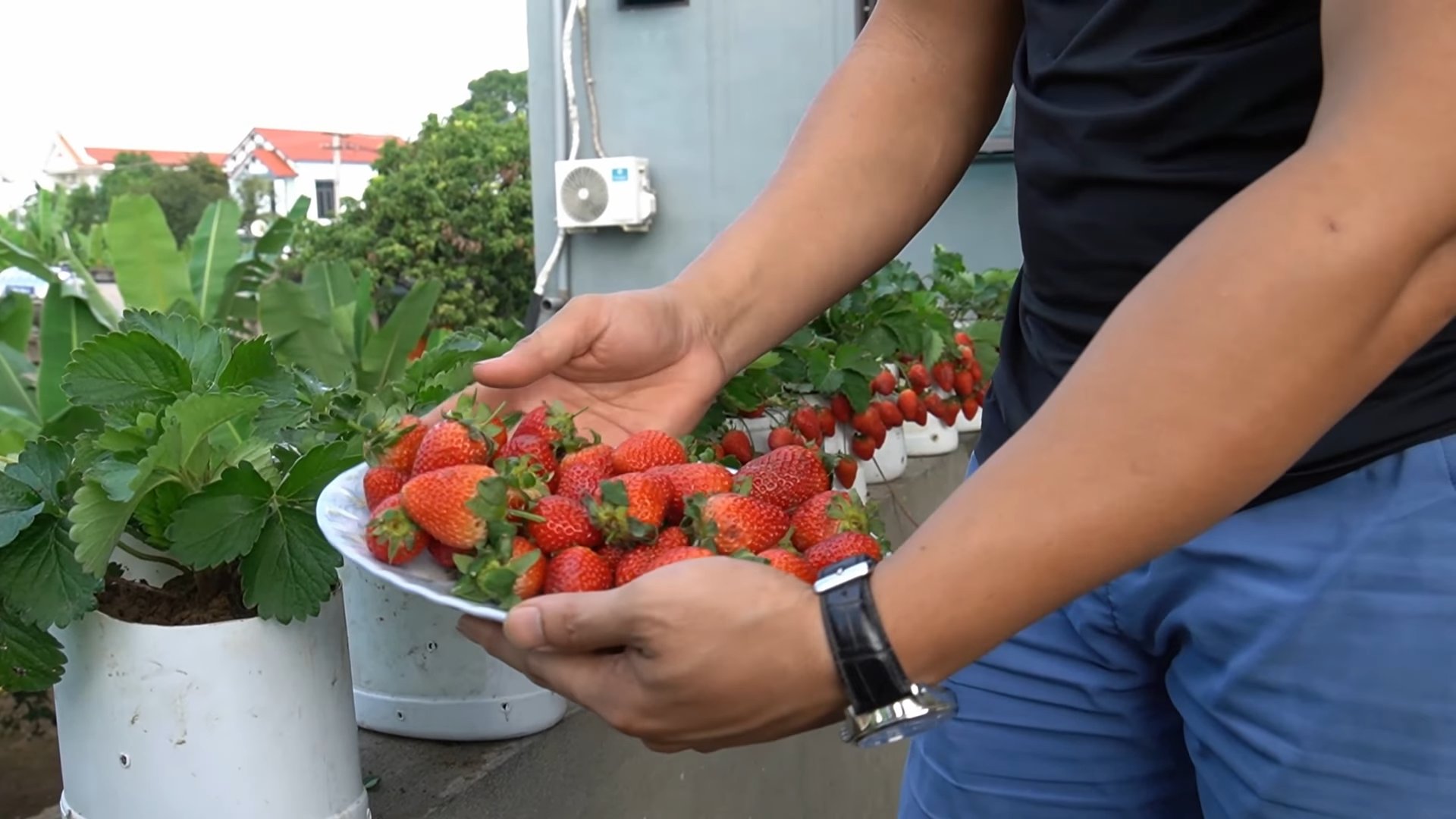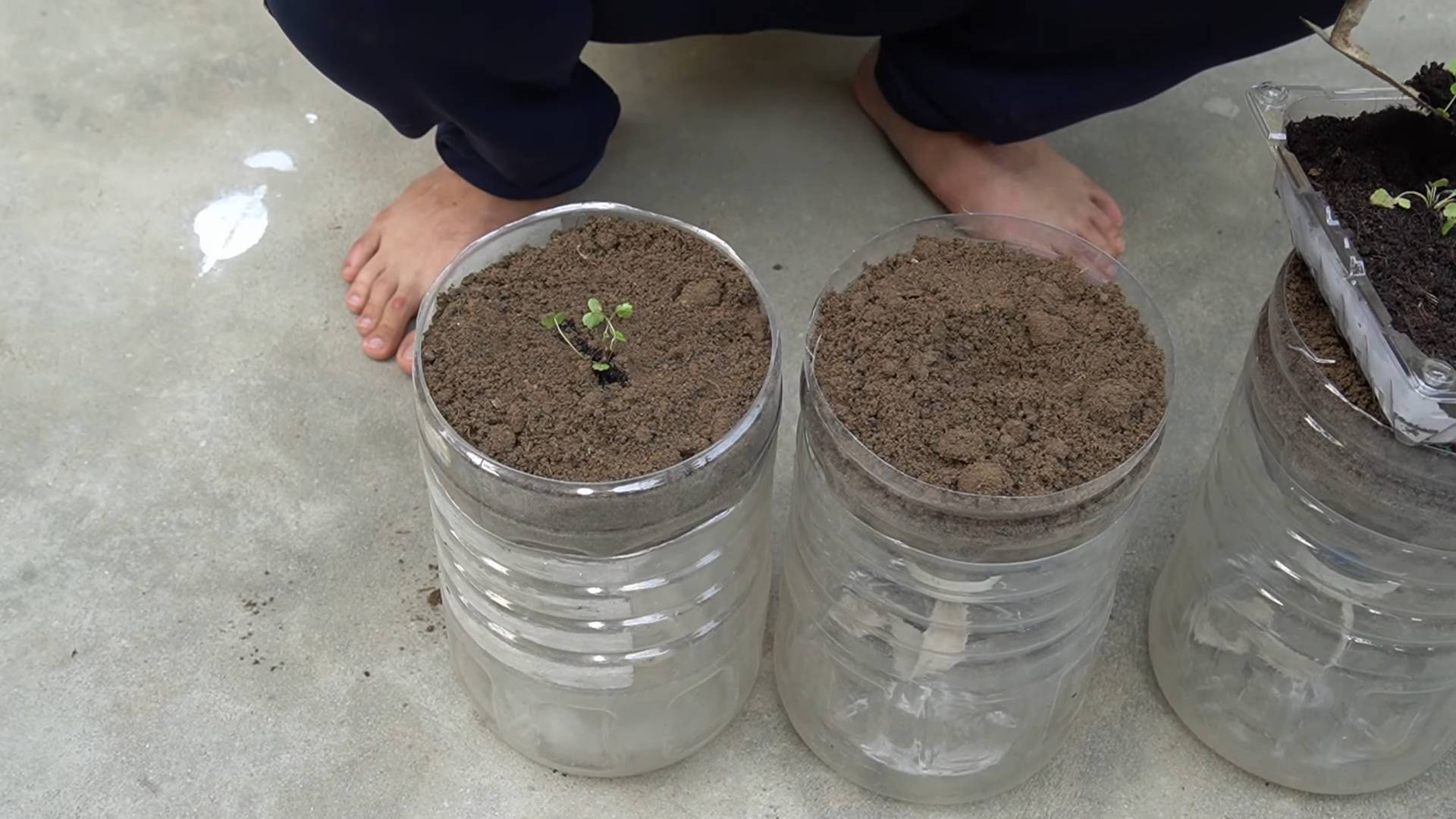Container strawberry growing is easier than you think, and I’m here to show you how! Imagine plucking juicy, sun-ripened strawberries right from your own patio or balcony. No sprawling garden needed, just a little know-how and a few simple supplies. For centuries, cultivating strawberries has been a cherished tradition, dating back to ancient Rome where they were prized for their medicinal properties and delightful flavor. Today, the joy of growing your own food is more relevant than ever.
In our fast-paced world, taking a moment to connect with nature can be incredibly therapeutic. Plus, let’s be honest, store-bought strawberries often lack the intense sweetness and aroma of homegrown varieties. That’s where this DIY guide comes in! I’ll walk you through everything you need to know about container strawberry growing, from choosing the right container and soil to providing the perfect amount of sunlight and water. Say goodbye to bland berries and hello to a bountiful harvest right at your fingertips. Get ready to unleash your inner gardener and enjoy the sweet taste of success!

DIY Container Strawberry Growing: A Bountiful Harvest on Your Patio!
Hey there, fellow gardening enthusiasts! I’m so excited to share my tried-and-true method for growing delicious, juicy strawberries right in containers. Forget those sad, store-bought berries – with a little effort, you can have a constant supply of fresh, homegrown goodness just steps from your door. This guide will walk you through everything you need to know, from choosing the right container to harvesting your sweet rewards. Let’s get started!
Choosing the Right Container and Variety
Before we dive into the nitty-gritty, let’s talk about the foundation of our strawberry success: the container and the variety.
* Container Size and Material: Strawberries need room to spread their roots, so opt for a container that’s at least 12 inches in diameter and 8 inches deep. You can use plastic pots, terracotta pots, hanging baskets, or even repurposed items like old buckets or tires (just make sure they’re clean and have drainage holes!). I personally love using terracotta pots because they look beautiful and allow the soil to breathe, but plastic is a more budget-friendly and lightweight option. Strawberry pots, specifically designed with pockets for multiple plants, are also a great choice if you’re short on space.
* Drainage is Key: No matter what container you choose, make sure it has adequate drainage holes. Strawberries hate sitting in soggy soil, which can lead to root rot. If your container doesn’t have enough holes, you can easily drill a few more.
* Choosing the Right Strawberry Variety: This is where things get interesting! There are three main types of strawberries:
* June-Bearing: These varieties produce one large crop of strawberries in the spring, usually around June (hence the name!). They’re great if you want a big harvest for making jam or freezing. Some popular June-bearing varieties include ‘Chandler,’ ‘Honeoye,’ and ‘Earliglow.’
* Everbearing: Everbearing strawberries produce two or three smaller crops throughout the growing season, typically in the spring, summer, and fall. They’re a good choice if you want a continuous supply of berries. ‘Seascape,’ ‘Ozark Beauty,’ and ‘Albion’ are excellent everbearing options.
* Day-Neutral: Day-neutral strawberries are similar to everbearing varieties, but they produce berries more consistently throughout the growing season, regardless of the day length. They’re a great option for areas with long growing seasons. ‘Tristar,’ ‘Tribute,’ and ‘San Andreas’ are popular day-neutral varieties.
I recommend choosing a variety that’s well-suited to your climate and your desired harvest schedule. If you’re unsure, ask your local nursery for recommendations. I personally love growing everbearing varieties because I enjoy having fresh strawberries throughout the summer and into the fall.
Preparing Your Container and Soil
Now that we’ve chosen our container and variety, let’s get our hands dirty!
1. Gather Your Supplies: You’ll need:
* Your chosen container
* High-quality potting mix (not garden soil!)
* Strawberry plants (either bare-root or potted)
* Slow-release fertilizer (optional)
* Watering can or hose
* Trowel or small shovel
* Mulch (straw, pine needles, or wood chips)
2. Prepare the Container: If you’re using a new container, give it a good rinse to remove any dust or debris. If you’re using a previously used container, make sure it’s clean and free of any diseases.
3. Add Potting Mix: Fill the container with high-quality potting mix, leaving about an inch or two of space at the top. Don’t use garden soil, as it’s too heavy and doesn’t drain well in containers. I like to use a potting mix that’s specifically formulated for containers, as it contains ingredients like peat moss, perlite, and vermiculite to improve drainage and aeration.
4. Incorporate Fertilizer (Optional): If you’re using a slow-release fertilizer, mix it into the potting mix according to the package directions. This will provide your strawberry plants with a steady supply of nutrients throughout the growing season. I personally prefer using organic slow-release fertilizers, as they’re gentler on the plants and the environment.
Planting Your Strawberry Plants
This is the exciting part! Let’s get those strawberry plants in the ground (or, rather, in the container!).
1. Prepare the Plants: If you’re using bare-root strawberry plants, soak them in water for about 30 minutes before planting. This will help rehydrate the roots and give them a good start. If you’re using potted strawberry plants, gently remove them from their pots and loosen the roots a bit.
2. Dig Planting Holes: Dig holes in the potting mix that are large enough to accommodate the roots of your strawberry plants. Space the plants about 8-12 inches apart, depending on the variety. If you’re using a strawberry pot, plant one strawberry plant in each pocket.
3. Plant the Strawberries: Place the strawberry plants in the holes, making sure that the crown (the point where the roots meet the stem) is level with the soil surface. Don’t bury the crown, as this can cause the plant to rot. Gently fill in the holes with potting mix and firm the soil around the plants.
4. Water Thoroughly: Water the newly planted strawberries thoroughly until the water drains out of the bottom of the container. This will help settle the soil and encourage the roots to establish.
5. Add Mulch: Spread a layer of mulch around the strawberry plants to help retain moisture, suppress weeds, and keep the berries clean. Straw is a classic choice for mulching strawberries, but you can also use pine needles or wood chips.
Caring for Your Container Strawberries
Now that your strawberries are planted, it’s time to provide them with the care they need to thrive.
1. Watering: Strawberries need consistent moisture, especially during hot, dry weather. Water them deeply whenever the top inch of soil feels dry to the touch. Avoid overwatering, as this can lead to root rot. I like to water my strawberries in the morning so that the foliage has time to dry before nightfall, which helps prevent fungal diseases.
2. Fertilizing: If you didn’t use a slow-release fertilizer when planting, you’ll need to fertilize your strawberries regularly throughout the growing season. Use a balanced fertilizer that’s specifically formulated for fruits and vegetables. Follow the package directions for application rates and frequency. I usually fertilize my strawberries every two to three weeks.
3. Sunlight: Strawberries need at least six hours of sunlight per day to produce a good crop of berries. Place your container in a sunny location where it will receive plenty of light.
4. Pest and Disease Control: Keep an eye out for common strawberry pests like aphids, spider mites, and slugs. You can control these pests with insecticidal soap, horticultural oil, or diatomaceous earth. Strawberries are also susceptible to fungal diseases like powdery mildew and gray mold. To prevent these diseases, make sure your plants have good air circulation and avoid overhead watering. If you notice any signs of disease, treat the plants with a fungicide.
5. Pruning: Remove any dead or damaged leaves and runners (the long, trailing stems that strawberry plants produce) regularly. Runners can divert energy away from fruit production, so it’s best to keep them trimmed. However, if you want to propagate new strawberry plants, you can allow some of the runners to root in small pots filled with potting mix.
6. Protecting from Birds: Birds love strawberries just as much as we do! To protect your berries from being eaten, you can cover your container with bird netting or use a scarecrow. I’ve found that bird netting is the most effective way to keep the birds away.
Harvesting and Enjoying Your Strawberries
The moment we’ve all been waiting for!
1. When to Harvest: Strawberries are ready to harvest when they’re fully red and slightly soft to the touch. The berries should also detach easily from the plant.
2. How to Harvest: Gently grasp the strawberry near the stem and twist it off the plant. Avoid pulling on the berry, as this can damage the plant.
3. Enjoy Your Harvest: Freshly picked strawberries are best enjoyed right away! You can eat them plain, add them to salads, make jam, or bake them into pies and cakes. Strawberries can also be frozen for later use. To freeze strawberries, wash and hull them, then spread them out on a baking sheet and freeze them for a few hours. Once they’re frozen solid, transfer them to a freezer bag or container.
Overwintering Your Strawberry Plants
If you live in an area with cold winters, you’ll need to protect your strawberry plants from freezing temperatures.
1. Move the Container: Move your container to a

Conclusion
So, there you have it! Transforming your outdoor space into a thriving strawberry patch with our simple container strawberry growing method is not just a gardening project; it’s an investment in fresh, delicious, and readily available fruit right at your fingertips. Forget those bland, store-bought berries that lack the vibrant flavor of homegrown goodness. With this DIY approach, you’re in control of the entire process, from selecting the perfect variety to nurturing your plants to their full potential.
Why is this container strawberry growing trick a must-try? Because it democratizes the joy of gardening. You don’t need acres of land or a green thumb passed down through generations. All you need is a sunny spot, a few containers, and a willingness to learn. It’s also incredibly space-efficient, making it ideal for apartment dwellers, balcony gardeners, and anyone with limited outdoor space. Plus, growing your own strawberries is a sustainable choice, reducing your reliance on commercially grown produce and minimizing your carbon footprint.
But the benefits extend beyond convenience and sustainability. There’s a unique satisfaction that comes from harvesting your own food, a connection to nature that’s both grounding and rewarding. Imagine the delight of sharing your homegrown strawberries with friends and family, knowing that you nurtured them from tiny plants to juicy, flavorful berries.
Ready to take your container strawberry growing to the next level? Consider these variations:
* Vertical Strawberry Towers: If space is truly at a premium, explore vertical strawberry towers. These ingenious structures allow you to grow a significant number of plants in a small footprint, maximizing your yield.
* Hanging Baskets: For a touch of whimsy and visual appeal, plant your strawberries in hanging baskets. Just be sure to choose a well-draining potting mix and water frequently, as hanging baskets tend to dry out quickly.
* Companion Planting: Enhance your strawberry patch by incorporating companion plants like basil, thyme, or marigolds. These herbs and flowers can help deter pests and attract beneficial insects, creating a healthier and more productive growing environment.
* Different Strawberry Varieties: Experiment with different strawberry varieties to find your favorites. Everbearing varieties produce fruit throughout the growing season, while June-bearing varieties offer a concentrated harvest in early summer. Day-neutral varieties are less sensitive to day length and can produce fruit continuously under the right conditions.
We’re confident that you’ll find this container strawberry growing method to be both rewarding and enjoyable. Don’t be afraid to experiment, adapt, and personalize the process to suit your specific needs and preferences. The most important thing is to get started and experience the joy of growing your own strawberries.
So, grab your containers, potting mix, and strawberry plants, and embark on this exciting gardening adventure. We can’t wait to hear about your experiences! Share your photos, tips, and success stories with us in the comments below. Let’s create a community of container strawberry growing enthusiasts and inspire others to discover the joys of homegrown fruit. Happy gardening!
Frequently Asked Questions (FAQ)
What is the best type of container for growing strawberries?
The ideal container for growing strawberries should be at least 6-8 inches deep and wide to accommodate the root system. Terra cotta pots, plastic containers, and even repurposed buckets can work well, as long as they have drainage holes to prevent waterlogging. Hanging baskets and strawberry pots (pots with multiple openings) are also popular choices, especially for smaller spaces. Consider the material of the container as well. Terra cotta pots dry out faster than plastic, so you may need to water more frequently. Dark-colored containers can also heat up quickly in direct sunlight, which can stress the plants.
What kind of soil should I use for container strawberry growing?
Strawberries thrive in well-draining, slightly acidic soil with a pH between 5.5 and 6.5. A high-quality potting mix specifically formulated for containers is the best option. Avoid using garden soil, as it can be too heavy and compacted, hindering drainage and root growth. You can also amend your potting mix with compost or other organic matter to improve its fertility and water-holding capacity. Adding perlite or vermiculite can further enhance drainage.
How often should I water my container strawberries?
Watering frequency depends on several factors, including the weather, the type of container, and the stage of plant growth. Generally, you should water your strawberries whenever the top inch of soil feels dry to the touch. During hot, dry weather, you may need to water daily, while during cooler, wetter periods, you can water less frequently. Avoid overwatering, as this can lead to root rot. Ensure that the container has adequate drainage to prevent water from pooling at the bottom.
How much sunlight do strawberries need?
Strawberries need at least 6-8 hours of direct sunlight per day to produce abundant fruit. Choose a sunny location for your containers, preferably one that receives morning sun. Afternoon shade can be beneficial in hot climates to prevent the plants from overheating. If you don’t have a sunny spot, you can supplement with grow lights.
How do I fertilize my container strawberries?
Strawberries are heavy feeders and benefit from regular fertilization. Use a balanced fertilizer specifically formulated for strawberries or fruits and vegetables. Follow the instructions on the fertilizer package for application rates and frequency. You can also use organic fertilizers like compost tea or fish emulsion. Fertilize your strawberries every 2-4 weeks during the growing season. Avoid over-fertilizing, as this can burn the roots and damage the plants.
How do I protect my strawberries from pests and diseases?
Several pests and diseases can affect strawberries, including aphids, spider mites, slugs, snails, and fungal diseases like powdery mildew and gray mold. Regularly inspect your plants for signs of infestation or disease. Remove any affected leaves or fruit promptly. You can use organic pest control methods like insecticidal soap or neem oil to control aphids and spider mites. Slugs and snails can be handpicked or trapped. To prevent fungal diseases, ensure good air circulation around the plants and avoid overhead watering.
How do I overwinter my container strawberries?
In colder climates, container strawberries need protection during the winter months. You can move the containers to a sheltered location, such as a garage or shed, or bury them in the ground. Mulch around the plants with straw or leaves to insulate the roots. Water sparingly during the winter, only enough to keep the soil from completely drying out. In milder climates, you may be able to leave the containers outdoors, but still provide some protection from frost.
When will my container strawberries produce fruit?
The timing of fruit production depends on the type of strawberry variety you’re growing. June-bearing varieties produce a single, large crop in early summer, while everbearing varieties produce fruit throughout the growing season. Day-neutral varieties are less sensitive to day length and can produce fruit continuously under the right conditions. Generally, you can expect to harvest your first strawberries within a few months of planting.
How do I harvest strawberries?
Harvest strawberries when they are fully ripe and red, with a slight sheen. Gently twist the berry from the stem, leaving the green cap attached. Avoid pulling the berry, as this can damage the plant. Harvest frequently, as ripe strawberries attract pests and can rot quickly.
Can I grow strawberries indoors?
While it’s possible to grow strawberries indoors, it can be challenging to provide them with the necessary sunlight and pollination. If you want to try growing strawberries indoors, choose a sunny window or use grow lights. You may also need to hand-pollinate the flowers to ensure fruit set.




Leave a Comment